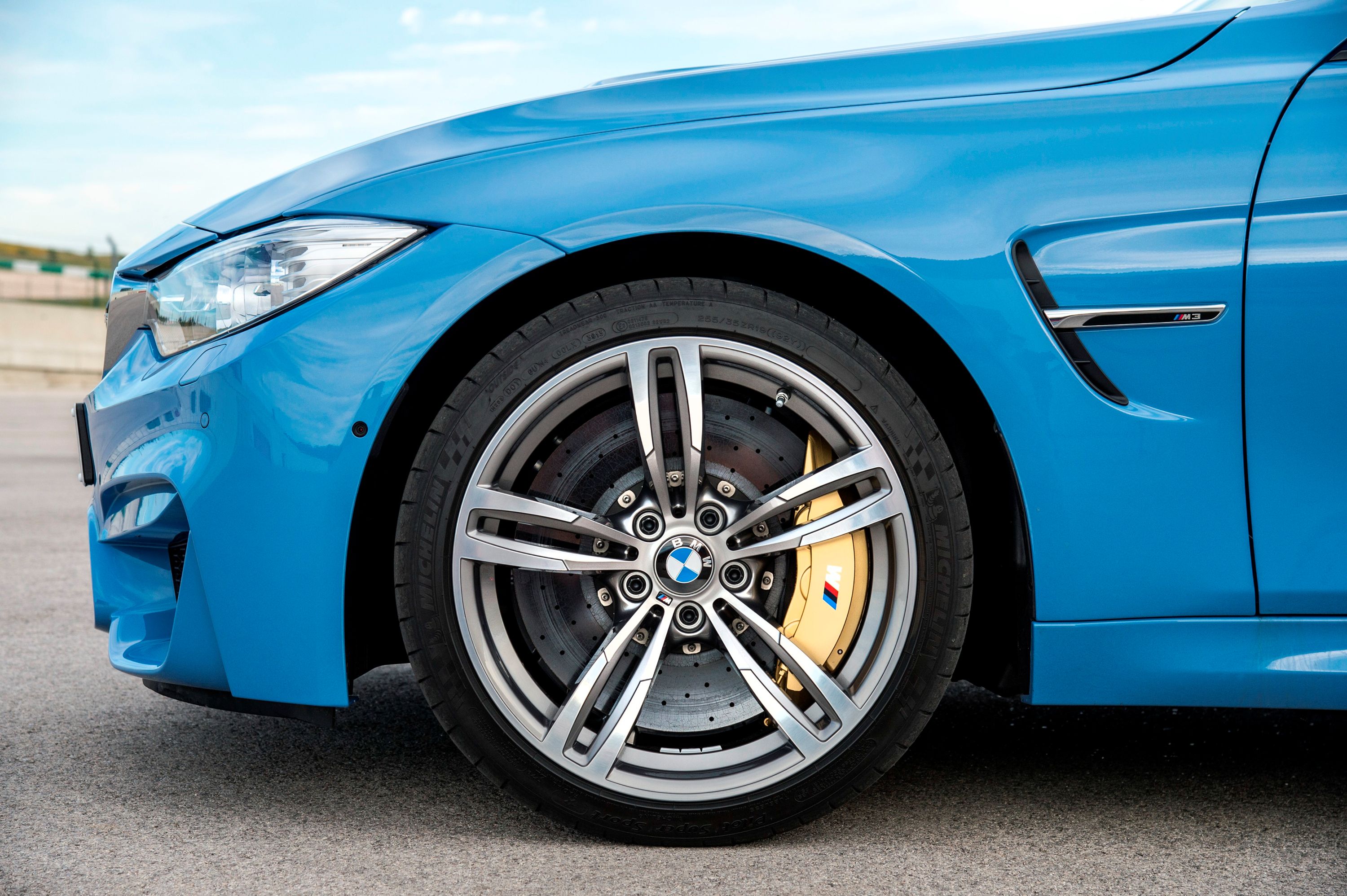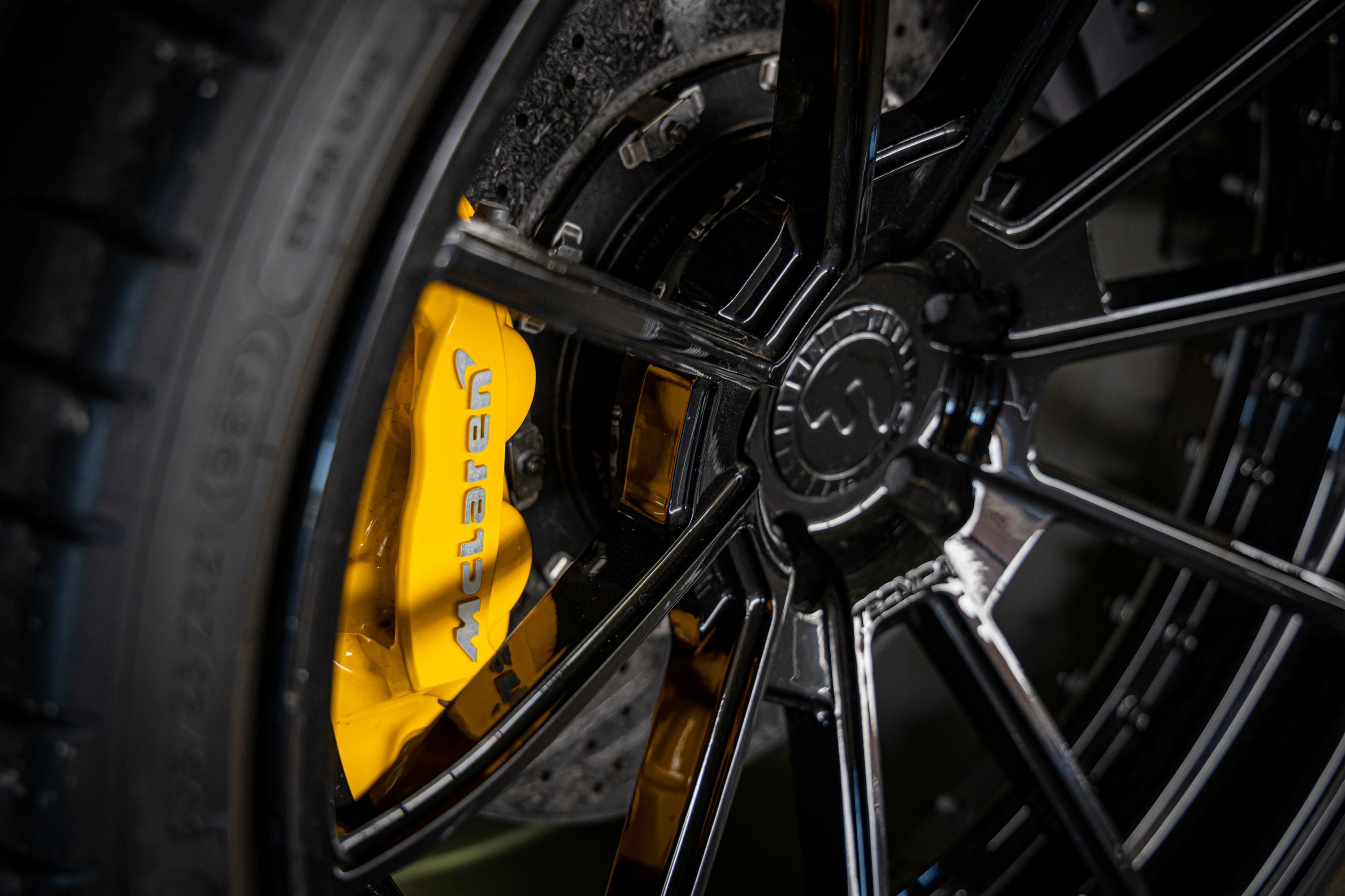
If you're even slightly interested in cars, you'll know just how important the braking system is, and have heard of carbon ceramic brakes. For the everyday driver, not much thought is given to the brakes: if they work, they work, right? But it turns out that there are a plethora of braking options, and for performance-minded drivers, the braking system is one of the first to get upgraded when modding a car to safely go faster. When it comes to high-end performance cars, most manufacturers have moved away from traditional brake pads and rotor materials in favor of carbon ceramic pieces. Carbon ceramic discs have proven that they offer better performance under strenuous driving conditions, but are carbon ceramic brakes really worth it? In this post, we'll take a look at the different types of brake pads and delve into the inner workings of carbon ceramic brakes.
What Are Carbon Ceramic Brakes?
To give a good understanding of why carbon ceramic brake pads and rotors are so highly regarded, you need to look back on their history: ceramic materials were first used by space agencies such as NASA to protect the underside of its space shuttles from extreme heat. Ceramic brakes have roots in the aeronautical and rail industries and were later adopted by F1 cars and eventually manufacturers of performance vehicles.
Carbon composite brakes are typically made from materials such as silicon and carbon fiber, with other materials such as Kevlar also featuring in some instances. These fragmented materials (carbon fiber and silicon resin) are placed into molds and are subjected to over 44,000 pounds of pressure and heated to around 400 degrees Fahrenheit. This cools, is gradually reheated to 1,800+ degrees over a couple of days, and then cooled once more with silicon powder being added to the mix. It is then heated a third time at over 3,000 degrees for another day, this time in a vacuum. This process forms silicon carbide, bonding with the carbon fiber. The result is a product that is light, durable, and rather expensive, thanks to the material cost, time, and expertise required. As with any other braking components, there are certain advantages and disadvantages, and sometimes, a more basic metallic-based system will actually be more suitable for your needs.
What's the Difference Between Organic, Metallic, and Carbon Ceramic Brake Pads?
There are three main types of friction materials used in braking systems: metallic, organic, and ceramic. Manufacturers usually use a mixture of these materials to find the perfect balance of grip strength, longevity, and cost. The Brembo brakes on a Porsche will offer more gripping power than your regular organic compounds used on budget sedans and hatchbacks. Metallic or semi-metallic pads use at least 30 percent metals, including copper fibers and iron. Metallic brake pads help dissipate heat quickly and can be used in higher heat ranges, but they tend to be noisy as they wear out and can be harsh on brake rotors. Most cars in the US use organic brake pads. These brake pads are made from materials such as carbon glass, fiberglass, and even rubber, and are the most cost-effective, produce the least amount of noise, and produce the least amount of wear on brake rotors. Carbon ceramic brakes are more expensive, but will last longer, thanks to their complex composition and ability to withstand high temperatures.
Are Carbon Ceramic Brakes Worth It?
Automotive technology has vastly improved in terms of braking systems, and carbon ceramic technology is at the forefront. Having been born on the racetrack, carbon ceramic rotors and brake pads for cars offer incredible stopping force, weight saving, and longevity but come at a massive cost (there's a good reason why you only see these types of brakes on high-end performance vehicles). For the significant majority of cars, carbon ceramic brakes will be overkill, and even capable sports cars will be better off with a quality set of ventilated steel discs and performance brake pads. If you're planning on building a 1,000-horsepower time attack monster, then sure, it would be worth looking into, but although composite braking systems have improved greatly over the past two decades, you will generally have better response and feel with normal steel discs and metal-based pads - so long as you're not driving hard for extended periods. That said, with proper care, composite brakes will last for the life of the car. Read more about performance braking here, and look at our car maintenance guide to understand how to check your brake pads for wear and tear.
Conclusion
Disc brakes are the go-to for most modern vehicles and offer excellent stopping power, but some cars need some extra heat resistance for longer periods to balance out massive power figures and performance potential. Carbon ceramic pads and rotors provide enormous amounts of stopping power during high-intensity braking for longer periods and are lightweight but cost a fortune to maintain. Carbon rotors and pads only have to be considered in super, hypercar, and racecar applications.


